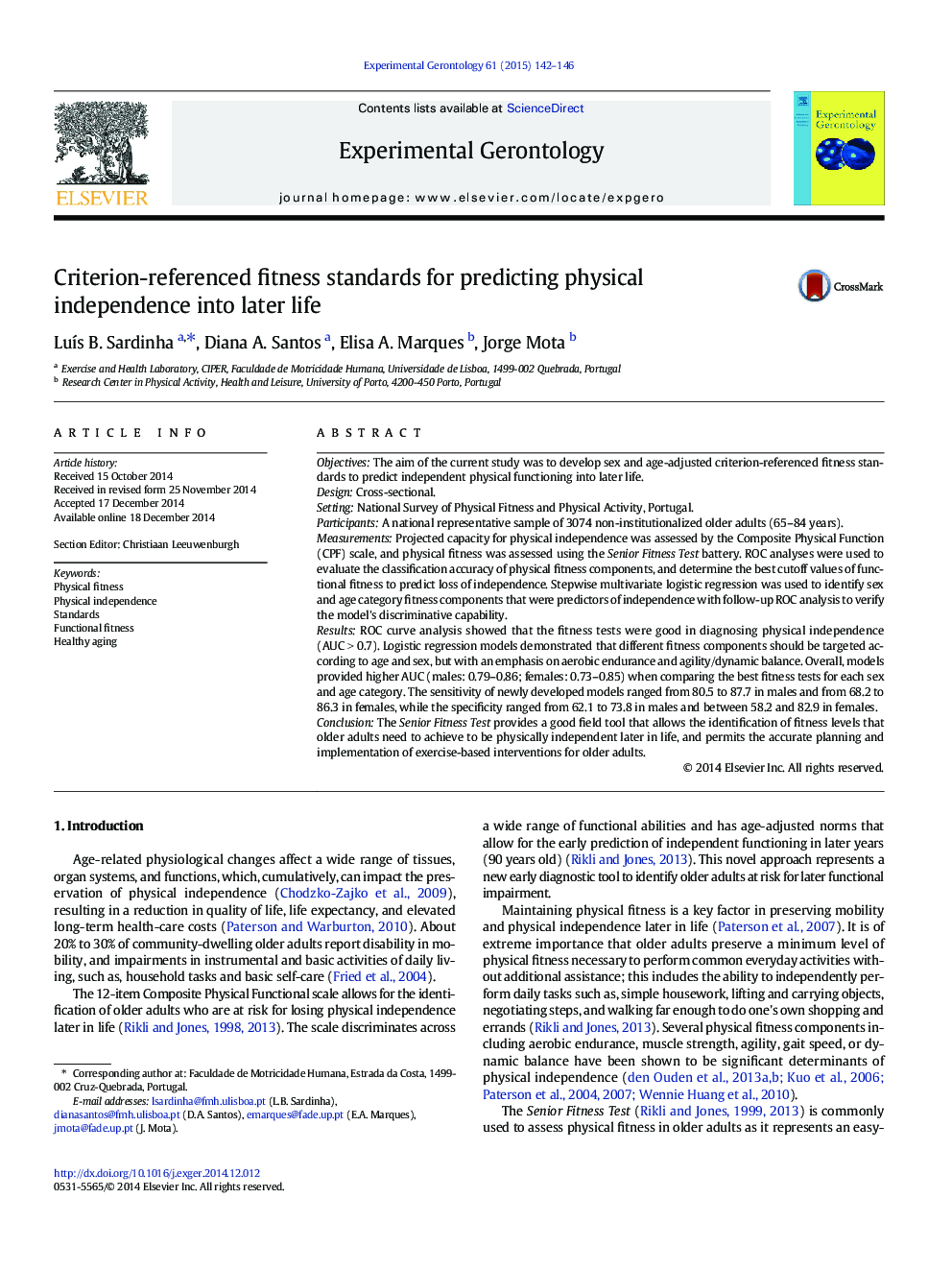| کد مقاله | کد نشریه | سال انتشار | مقاله انگلیسی | نسخه تمام متن |
|---|---|---|---|---|
| 1906219 | 1534880 | 2015 | 5 صفحه PDF | دانلود رایگان |
• Maintaining a minimum physical fitness level is necessary for physical independence.
• Fitness standards can be used to predict physical independence later in life.
• These criterions provide a tool for personalized exercise prescription.
ObjectivesThe aim of the current study was to develop sex and age-adjusted criterion-referenced fitness standards to predict independent physical functioning into later life.DesignCross-sectional.SettingNational Survey of Physical Fitness and Physical Activity, Portugal.ParticipantsA national representative sample of 3074 non-institutionalized older adults (65–84 years).MeasurementsProjected capacity for physical independence was assessed by the Composite Physical Function (CPF) scale, and physical fitness was assessed using the Senior Fitness Test battery. ROC analyses were used to evaluate the classification accuracy of physical fitness components, and determine the best cutoff values of functional fitness to predict loss of independence. Stepwise multivariate logistic regression was used to identify sex and age category fitness components that were predictors of independence with follow-up ROC analysis to verify the model's discriminative capability.ResultsROC curve analysis showed that the fitness tests were good in diagnosing physical independence (AUC > 0.7). Logistic regression models demonstrated that different fitness components should be targeted according to age and sex, but with an emphasis on aerobic endurance and agility/dynamic balance. Overall, models provided higher AUC (males: 0.79–0.86; females: 0.73–0.85) when comparing the best fitness tests for each sex and age category. The sensitivity of newly developed models ranged from 80.5 to 87.7 in males and from 68.2 to 86.3 in females, while the specificity ranged from 62.1 to 73.8 in males and between 58.2 and 82.9 in females.ConclusionThe Senior Fitness Test provides a good field tool that allows the identification of fitness levels that older adults need to achieve to be physically independent later in life, and permits the accurate planning and implementation of exercise-based interventions for older adults.
Journal: Experimental Gerontology - Volume 61, January 2015, Pages 142–146
